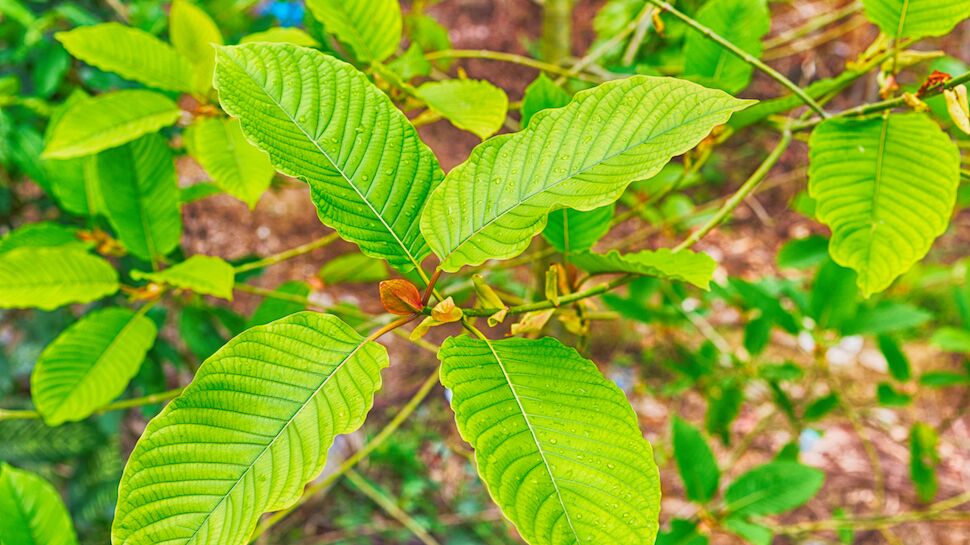
In recent times, kratom, a plant-derived herb native to Southeast Asia, has experienced a spike in appeal throughout the United States. Heavily promoted online and readily available in vape shops, convenience stores, and specialized herbal shops, kratom is frequently depicted as a natural solution, an herbal alternative for chronic pain, anxiety, and opioid withdrawal. However, beneath the enticing facade of wellness and alleviation lies a perilous, mainly unregulated compound that can lead to severe addiction, psychosis, and even fatalities.
Originating from the leaves of Mitragyna speciosa, a tropical evergreen tree found in regions such as Thailand, Malaysia, Indonesia, and Myanmar, kratom has commonly been utilized by manual workers to fight exhaustion and alleviate pain. It was presented to Western consumers as a harmless and herbal substitute for prescribed opioids, rapidly attracting attention from at-risk communities dealing with chronic pain or opioid addiction. Currently, the spike in kratom consumption has reached concerning levels, with approximately 3 to 5 million American adults using it regularly, which corresponds to about 0.9 to 1.5 percent of the U.S. population. Monthly imports into the United States hover around 2,000 metric tons, showcasing its swift rise in popularity and usage.
Central to kratom’s pharmacological charm are two strong alkaloids: mitragynine and 7-hydroxymitragynine. These compounds attach directly to the brain’s opioid receptors, yielding stimulant-like effects at lower doses and sedative, pain-relieving impacts at elevated levels. Mitragynine itself has about 13 times the potency of morphine, while 7-hydroxymitragynine can be up to 46 times more powerful than mitragynine, escalating its risks significantly. This opioid-like strength leads directly to dependence, tolerance, and debilitating withdrawal symptoms that include anxiety, tremors, severe pain, insomnia, and intense cravings akin to traditional opioid addiction.
The increasing acceptance and availability of kratom have obscured its serious adverse effects and potential for addiction. Research indicates that kratom use surged during the COVID-19 pandemic, as millions dealt with isolation, financial strain, and limited access to conventional healthcare. Individuals turned to kratom in search of relief from stress, ennui, and pain, often underestimating its dangers due to its “natural” branding. Sadly, numerous people have only realized too late the serious ramifications of kratom dependence, facing withdrawal symptoms comparable in severity to those of opioids.
Despite its hazards, some studies suggest possible beneficial effects of kratom, especially regarding its pain-relieving properties and potential to alleviate opioid withdrawal symptoms. Traditional use in Southeast Asia has demonstrated kratom’s ability to ease chronic pain and mood disorders, providing relief where standard medical treatments have fallen short. Preliminary animal research even hints at potential antidepressant and antipsychotic effects, although these results still need validation through rigorous clinical trials.
The harmful impacts of kratom do not solely revolve around dependency. Medical research and clinical case reports have highlighted alarming psychiatric outcomes linked to long-term kratom use. Symptoms such as psychosis, mania, paranoia, and severe mood disorders have been observed, particularly in users with pre-existing mental health issues. Young people face considerable risk due to kratom’s easy accessibility, online purchase options, and perceived safety. Young adults and teenagers may be particularly susceptible to developing dependence and experiencing extreme psychiatric and neurological effects.
Various kratom formulations offer different strengths and effects, complicating both usage and oversight. Kratom comes in several forms, including capsules, powders, extracts, teas, and resins, each differing substantially in potency and pharmacological effects. Extracts and concentrated variants contain higher levels of alkaloids, raising the risk of toxicity, addiction, and overdose. This variability not only heightens the associated risks but also creates difficulties in clinical management and treatment.
Furthermore, the absence of regulatory oversight in kratom production presents a significant public health hazard. Unregulated manufacturing and distribution practices have led to contamination and adulteration with harmful substances, including dangerous synthetic opioids and psychoactive chemicals, further elevating the risks of severe health emergencies and deaths. Reports have documented cases of organ damage, seizures, comas, and even fatalities linked to tainted kratom products.
In spite of these threats, specialized treatment options for kratom use disorder remain insufficiently developed. Physicians typically utilize established opioid dependency treatments, such as buprenorphine-naloxone, to address withdrawal and decrease cravings. Antidepressants, anxiolytics, and supportive psychological interventions have also shown potential. However, without strict clinical guidelines and targeted treatments, individuals struggling with kratom dependence often slip through the gaps in the healthcare system.
Public health officials, healthcare providers, and lawmakers must promptly address the uncontrolled spread of kratom. Educational initiatives need to replace misleading marketing with clear, science-based information regarding kratom’s true nature and risks. Regulatory bodies must enforce rigorous oversight to prevent adulteration and contamination, ensuring consumer safety. And healthcare professionals must prioritize the development of comprehensive treatment frameworks for addressing kratom dependence.